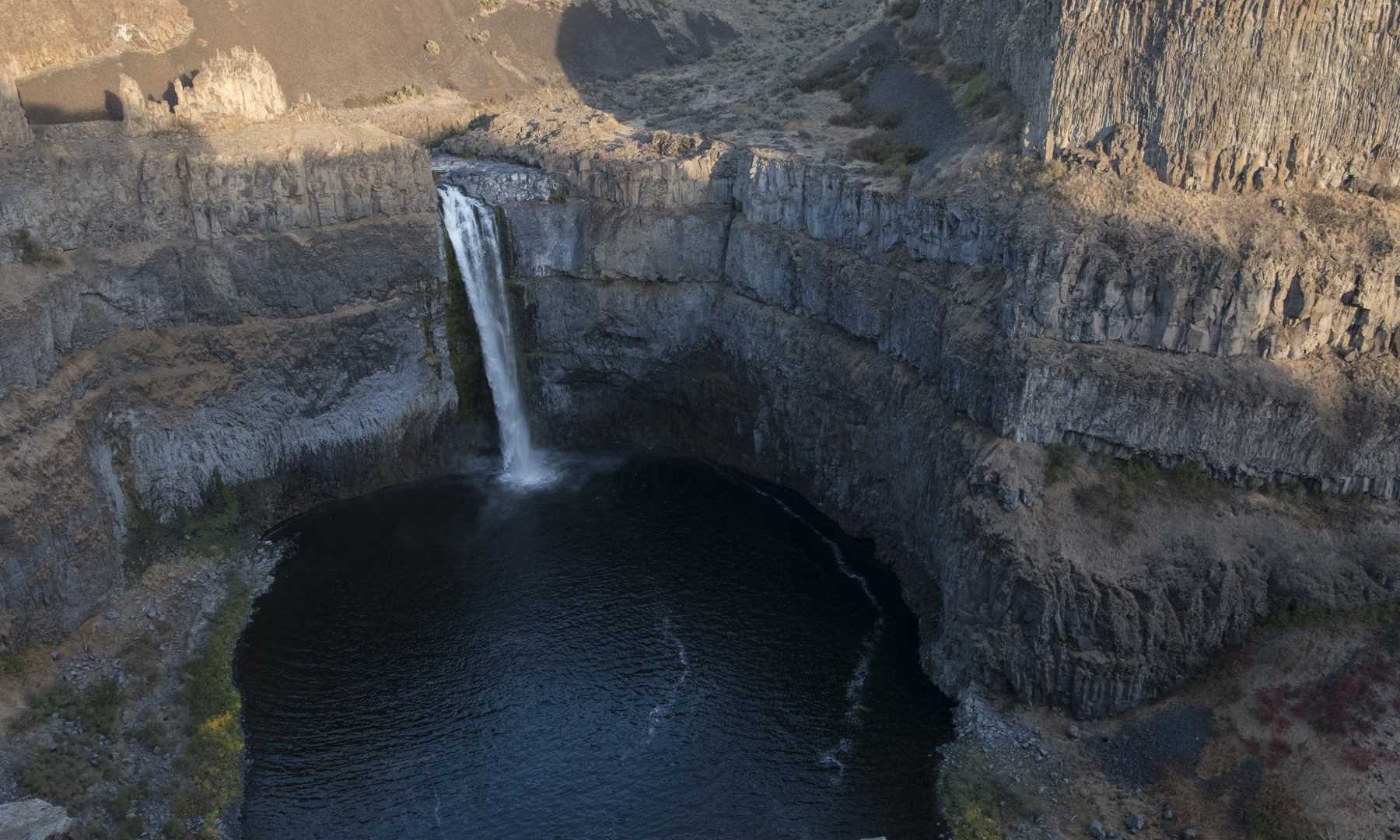Today we travelled the lower reaches of the Snake River. This is dry country, and at this time of year tan grass slopes alternate with chocolate-colored basalt cliffs. Basalt is everywhere, and could be considered monotonous were it not for its ever-varying textures and tones. And its ubiquity gives a sense of the scale of the lava flows that formed it.
The latest set of events, geologic in scale, and with lasting biological effect, was the building of dams. We passed through the locks of several, the most interesting perhaps being Lower Monumental. Here we dropped our little rubber boats and went through the lock with a more intimate perspective. Approaching the dam we saw the outlet of the fish by-pass system, meant to divert young salmon around the turbines, and the fish ladders. Later in the evening, our historian Julius spoke about “fish crisis”, setting much of this in context.
In the afternoon we anchored at the mouth of the Palouse River. Most of us went ashore and took a quick bus ride up to Palouse Falls. At 210 feet, this waterfall is quite impressive. Equally remarkable is the outsized plunge pool into which it tumbles. While the near-law of uniformitarianism would conclude that this pit must be the result of the rather narrow waterfall’s steady work over ages, it was, in fact, created by the catastrophic Missoula (also known as the Bretz) Floods.
Meanwhile, small boaters were travelling the lower impounded section of the river. We found cattails, tules and willows, the food of beavers and porcupines—both unexpected in this open country. At different times, groups saw various hawks, eagles and falcons, as well as a coyote, a porcupine, and lots of waterbirds, including one very bold and cooperative Western grebe. We also saw a walled-off basalt bluff. While rather unassuming in appearance, this is one of North America’s most significant archaeological sites. Along with all sorts of artifacts, human remains were found here dating back more than ten thousand years—some of the oldest ever found on this continent. And a nearby recant burial, moved to avoid the flooding of the Snake River dam, was found to have a silver Jefferson peace medal given by Lewis and Clark.
As is so often the case on the Snake and Columbia Rivers, the places we saw today were rich in scenery, wildlife, and were the setting for layer upon layer of geological, biological and cultural history.









